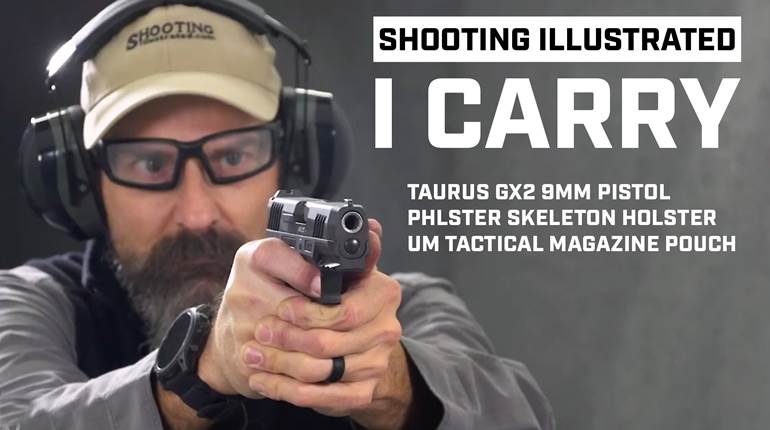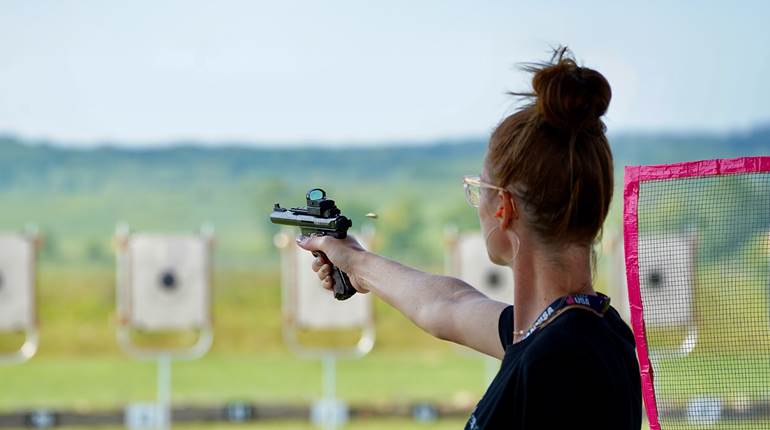
While one or two firearm makers have historically offered a 1911 chambered in the 9 mm cartridge, it now seems that almost all major and many custom 1911 builders have some type of 9 mm pistol in the lineup. One such manufacturer is Sturm, Ruger & Co. Ruger recently added a 9 mm Luger “Commander” to its ever-expanding catalog of 1911 pistols.
Intentionally or accidentally, the Federal Bureau of Investigation has reignited the handgun “stopping power” debate. Having long ago been discussed and decided, conventional thinkers all agreed that the .40 S&W was the best possible choice for a full-sized law enforcement pistol. When compared to the smaller 9 mm Luger or the larger .45 ACP, the .40 S&W cartridge, it was said, offered the best possible combination of magazine capacity, manageable recoil, overall size and stopping power. But recent FBI testing shows that 9 mm Luger, with proper bullet selection, can be just as effective as the .45 ACP and .40 S&W. This finding is understandable given the drastic improvement in handgun bullets over the last few decades. Bullets with bonded jackets and controlled-expansion characteristics have leveled the playing field as far as most self-defense cartridges are concerned.
This revelation about the potential effectiveness of the 9 mm Luger as a law enforcement cartridge has played no small part in the recent explosion in popularity of 1911-pattern pistols now being offered in 9 mm. But is this popularity based solely on the FBI’s stopping power findings? What does a 9 mm 1911 pistol offer over its .45 ACP cousin?
The first—and most obvious—advantage is one of recoil. The 9 mm Luger, even in its hottest +P loadings, produces a softer recoil impulse and is easier to control than a full-powered .45 ACP. This means that a seasoned shooter and a novice shooter alike can practice proper fundamentals without the constant distraction of jarring recoil.
The second advantage is one of magazine capacity. Previously, magazines designed to feed 9 mm Luger ammunition held only nine rounds. This was not a big advantage over .45 ACP magazines designed to hold eight rounds. But now Wilson Combat, Tripp Research and others are making high-quality reliable 9 mm magazines designed to hold 10 rounds. These 10-round magazines offer a 25 percent increase in ammunition payload over those for the 45 while maintaining a high degree of reliability. It has been my experience that the newest generation 9 mm 1911 magazines will feed full metal jacket and jacketed hollow-point ammunition without fail. On a related note, I experienced one failure to feed during testing and it occurred while using one of the older-pattern 9-round magazines.
A third advantage, also related to ammo, is cost. While premium defensive ammo ranges from 50 cents to a dollar each regardless of caliber, 9 mm practice ammo can be found for as little as 17 cents each. By comparison, .45 ACP will usually run an additional five cents or so per shot. The savings add up box after box and can be even more significant to those who reload their own practice ammo.
The fourth advantage is one of weight. On average, a fully loaded 9 mm 1911 weighs 2 oz. less than a fully loaded 1911 chambered in .45 ACP. While the difference doesn’t sound like much, 2 oz. can be noticeably different when the firearm is carried all day, every day.
Ruger’s new Commander, model number 6722, is built on the classic Commander pattern and features a lightweight aluminum frame like the Colt original. The brushed stainless slide is fitted with Novak three-dot painted sights. The frame is an anodized dull gray that's reminiscent of the finish used on Vietnam-era M16 rifles; giving the gun a mild two-tone finish. The grip safety, control levers and magazine release are a dull black that sit nicely with the pistol’s black rubber stocks. The controls are the popular extended variety and the magazine well is nicely beveled. These features make the new Ruger “good to go" right out of the box. The pistol’s controls operate smoothly and the trigger breaks crisply at a measured 4.25 lbs. The barrel features the Wilson/Nowlin feed ramp that provides reliable feeding and also protects the aluminum frame from damage that can be caused from continued use of JHP ammo. The Ruger ships with a light 10-lb. spring, ideal for mild target ammo. For my testing purposes I installed a 16-lb. spring and had no cycling issues with any of the loads.
Like many of today’s 1911s, the grip safety fits loosely inside the frame and the barrel bushing is not tight against the slide nor barrel. It is not a surprise to have loose tolerances in a factory 1911 in this price range. With that said, the pistol proved to be reasonably accurate but a properly fit barrel bushing would likely take this pistol from a basic shooter to an impressive tack driver.
Three brands/weights of ammo were fired through the gun for accuracy. These loads were chosen with the idea that each load represented a good average of what’s commercially available and what the pistol might be used for. The Perfecta ammo was chosen as inexpensive plinking fodder while the 147-gr. Winchester was chosen as an economical and readily available choice for self-defense. The Speer Gold Dot +P was tested because it represents one of the better choices in premier 9 mm defensive ammo.
All in all, Ruger has done an adequate job with the new 6722. The pistol combines features, price and cartridge and offers the consumer a solid value at a solid price. While there are some less expensive 1911 models available, the Ruger 1911’s are 100 percent American made with no imported frame castings or offshore MIM parts used.
Five consecutive groups of five rounds each was tested from a sandbagged rest at 25 yards with the results shown on the accompanying table.
NRA Specifications
Manufacturer: Sturm, Ruger & Co.
Model: SR1911 6722
Caliber: 9 mm Luger
Action: Recoil-operated, hammer-fired, semi-automatic center-fire pistol
Frame: Aluminum alloy
Finish: Brushed stainless slide, matt gray anodized frame
Slide: Stainless steel
Barrel: 4.25” stainless steel
Magazine: Detachable Box; nine-round capacity (10-round available aftermarket)
Sights: Dovetailed three-dot configuration. Drift adjustable
Trigger: 5-lb., 4-oz. pull
Weight: 29.3 ozs.
MSRP: $979




































